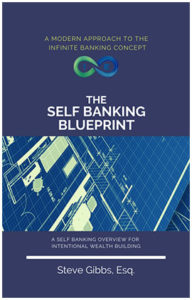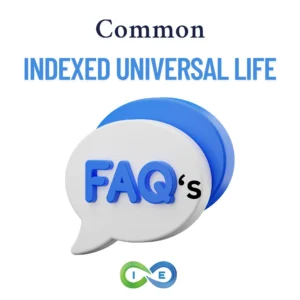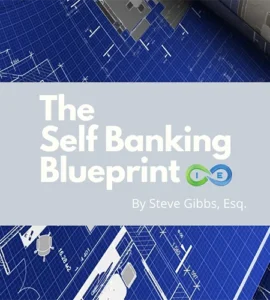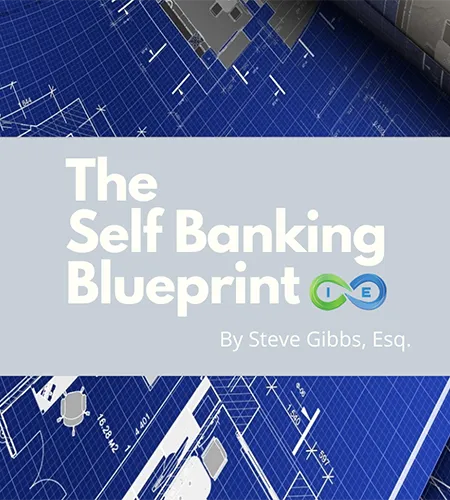By Jason Herring, IUL Specialist | Pro Client Guide – IUL and Retirement Income Distribution Expert | 14+ years experience in life insurance and retirement income strategies
📖 Estimated Reading Time: 18 minutes
TL;DR: The Bottom Line
Dave Ramsey’s debt elimination advice has helped millions, but his criticism of Indexed Universal Life insurance is based on a fundamental misunderstanding. His team incorrectly claims IUL cash value is “invested in indexed funds,” when it’s actually safely held in the insurance company with returns linked to market indexes through options strategies. This critical distinction means IUL provides market participation without market risk—your principal is protected during downturns while capturing upside growth. While IUL isn’t right for everyone and requires proper structuring, dismissing it based on misconceptions means missing a powerful tool for tax-free retirement income.
Table of Contents
- Introduction: Dave Ramsey’s Strengths and Limitations
- The Core Misconception: Index Funds vs. Indexing Strategy
- How IUL Actually Works: The Options Budget Explained
- Real-World Performance: What Happened in 2008 and 2020
- Debunking Ramsey’s Specific Claims About IUL
- 5 Questions That Reveal IUL Understanding
- Real IUL Performance: Case Studies and Examples
- When Dave Ramsey Is Right About IUL
- What Proper IUL Structure Actually Looks Like
- Conclusion
Introduction: Dave Ramsey’s Strengths and Limitations
Dave Ramsey has helped millions of Americans escape the crushing burden of consumer debt. His Baby Steps program provides clear, actionable guidance for people drowning in financial chaos, and his emphasis on living below your means, avoiding consumer debt, and building emergency funds creates a solid foundation for financial stability.
This foundation matters. For families struggling with credit card debt, car loans, and lack of emergency savings, Ramsey’s straightforward approach offers a lifeline. His debt snowball method—paying off smallest debts first for psychological wins—often works better than mathematically optimal strategies because it addresses the behavioral aspects of money management.
However, once you’ve mastered these financial basics and are ready for sophisticated wealth-building strategies, Ramsey’s one-size-fits-all approach can become limiting. This is particularly evident in his criticism of permanent life insurance products, where his team’s analysis reveals fundamental misunderstandings about how these financial instruments actually work.
Nowhere is this more apparent than in his stance on Indexed Universal Life (IUL) insurance. In a Ramsey Solutions article about about IULs, the team makes a critical error that undermines their entire argument: they fundamentally misunderstand what IUL indexing actually is.
The Core Misconception: Index Funds vs. Indexing Strategy
The Ramsey Solutions article states: “Indexed universal life insurance uses your premiums to pay for two features: a death benefit for your family or estate, and a cash value account that’s tied to an indexed fund. That’s why it’s called indexed.”
This statement appears multiple times throughout their article in various forms. It’s not a minor detail but a foundation of their entire criticism. And it’s completely wrong.
Here’s the critical distinction:
| Index Fund Investment | IUL Indexing Strategy |
|---|---|
| What Ramsey Thinks IUL Is: • Money is invested directly in index funds • Cash value is in the market • Subject to market losses • Works like Variable Universal Life • Similar to owning mutual funds |
What IUL Actually Is: • Money stays safe in insurance company • Cash value never enters the market • Protected by 0% floor guarantee • Returns linked via options strategies • Completely different mechanism |
Here is the reality. IUL policies do not invest your cash value in index funds. Your money is not in the stock market. During the 2008 financial crisis, when index funds lost 30-40% of their value, properly structured IUL policies lost exactly zero dollars due to market decline.
Key Point: Understanding “Indexing”
When insurance companies use the term “indexed” universal life, they’re describing a crediting method, not an investment strategy. Your cash value remains in the insurance company’s general account. The company uses a portion of the interest they would normally credit to you to purchase options on market indexes. If the market goes up, the value of those options provides the funds to credit your account with higher returns. If the market goes down, the options expire worthless, but your principal remains intact.
This is fundamentally different from Variable Universal Life (VUL), where your cash value is actually invested in subaccounts that can lose money during market downturns.
How IUL Actually Works: The Options Budget Explained
To understand why Ramsey’s team gets this so wrong, you need to understand the actual mechanics of IUL indexing. Let’s walk through a simplified example:
The Basic Structure
Imagine you have $100,000 of cash value in an IUL policy. Here’s what actually happens:
- Your money stays in the insurance company – All $100,000 remains in the insurance company’s general account, earning their conservative portfolio rate (typically 3-5%)
- You choose your crediting strategy – Instead of accepting that 3-5% fixed rate, you can choose to “link” your returns to a market index like the S&P 500
- The “link” is created through options – When you choose indexing, you’re telling the insurance company: “Use the interest you would have paid me (say $4,000-$5,000 on $100,000) to purchase options on the S&P 500 instead”
- The insurance company buys upside call options – Insurance companies are the largest purchasers of equity options in the world. They use your foregone interest to buy options that give them the right to participate in market gains
- At the end of the crediting period, one of two things happens:
- If the market goes up: The options have value, and the insurance company uses that value to credit your account with the index gains (subject to caps/participation rates)
- If the market goes down: The options expire worthless, you don’t earn anything that period, but you also don’t lose any principal
Why This Matters
This mechanism creates something unique in financial products: asymmetric returns. You participate in market upside (with some limitations due to caps and participation rates), but you have absolute downside protection through the floor guarantee.
Compare this to what Ramsey thinks happens (investing in index funds):
| Scenario | Index Fund (What Ramsey Thinks) | IUL Reality |
|---|---|---|
| Market up 12% | You earn 12% (minus fees) | You earn up to cap rate (e.g., 10-12%) with no market risk exposure |
| Market down 30% | You lose 30% of your money | You earn 0%, but lose $0 due to market decline |
| Your $100,000 after crash | Now worth $70,000 | Still worth $100,000 |
This is why financial professionals who understand IUL mechanics find Ramsey’s criticism frustrating since he’s criticizing a product that doesn’t exist. He’s attacking index fund investing and calling it IUL.
Real-World Performance: What Happened in 2008 and 2020
Theory is one thing. Real-world results are another. Let’s look at what actually happened to IUL policies during the two major market crashes of the past 20 years:
The 2008 Financial Crisis
The 2008-2009 financial crisis was the worst economic downturn since the Great Depression. Here’s what happened:
| Investment Type | 2008 Performance | Impact on $1 Million |
|---|---|---|
| S&P 500 Index | Down 38.5% | $1,000,000 → $615,000 Loss: $385,000 |
| Index Funds | Down 30-40% (tracking error and fees) | $1,000,000 → $600,000-$700,000 Loss: $300,000-$400,000 |
| IUL Policies | 0% credited (floor protection activated) | $1,000,000 → $1,000,000 Loss: $0 |
Then came 2009. The market began recovering, and by the end of the year, the S&P 500 was up 26.5%. But here’s where the IUL advantage compounds:
- Index fund investors who lost 38.5% needed a 62.6% gain just to break even (due to the mathematics of losses). Starting from $615,000, a 26.5% gain only brought them to $778,000, which is still 22% below their original balance
- IUL policyholders who maintained their $1,000,000 during the crash then captured the 2009 upside (subject to caps, typically around 10-12% at that time), taking their balance to approximately $1,100,000-$1,120,000
It took index fund investors until late 2012 to recover to their pre-crash levels, which was more than four years. IUL policyholders never lost ground and continued earning positive returns throughout the recovery.
The 2020 COVID-19 Market Crash
In March 2020, the market experienced one of the fastest crashes in history, dropping over 30% in just a few weeks. Then came an equally dramatic recovery. This created a unique opportunity for IUL policies with annual point-to-point crediting:
| Period | Market Performance | IUL Crediting (March to March) |
|---|---|---|
| March 2020 crash | S&P 500 down 34% from peak | Annual crediting period measured low point to recovery |
| March 2020 to March 2021 | S&P 500 up 66.3% from March low | Many policies credited 10-12% (capped accounts) |
For policyholders with annual point-to-point crediting measured from March 2020 to March 2021, this created exceptional returns—capturing the full recovery from the March lows without ever experiencing the losses.
Key Insight: Lock In Gains and Reset
One of IUL’s most powerful features is the annual “lock in and reset” mechanism. Each year, any gains are permanently credited to your account and can never be taken away by future market downturns. Then your new, higher account value becomes the starting point for the next crediting period. This means someone who had $850,000 on March 15, 2020, and was credited between 10-12% (typical capped accounts) by March 15, 2021, now had approximately $935,000-$952,000.
Debunking Ramsey’s Specific Claims About IUL
Beyond the fundamental indexing misconception, Ramsey makes several other claims about IUL that deserve examination:
Claim #1: “The Fees Are Outrageous”
Ramsey says: “The fees are outrageous, especially upfront. Even if they drop later, you could lose thousands before seeing real value.”
The reality: This criticism applies to poorly structured IUL policies, not properly designed ones. The issue isn’t IUL as a product but how many agents structure these policies.
In a properly structured max-funded IUL policy designed for cash accumulation:
- First-year cash value efficiency can reach 60-70% (meaning $60,000-$70,000 of accessible cash value on a $100,000 premium)
- By year 5-7, internal rates of return typically range from 4-6% on every premium dollar paid
- Long-term net returns (after all costs) typically run within 1-2% of gross crediting rates
The key is minimizing the death benefit relative to premium. Insurance companies must charge for the “net amount at risk” (death benefit minus cash value). By keeping the death benefit at the minimum required by IRS regulations, you minimize insurance costs and maximize cash accumulation.
Compare this to Ramsey’s recommended approach—buying term and investing in mutual funds:
| Cost Factor | Term + Mutual Funds | Properly Structured IUL |
|---|---|---|
| Term life insurance | Separate premium (increasing with age) | Included (decreasing cost over time) |
| Investment fees | Expense ratios 0.5-1.5% | Built into crediting structure |
| Advisory fees | 1% AUM annually | None after policy issued |
| Taxes on gains | 15-23.8% capital gains | $0 (tax-free access) |
| Taxes on income | Ordinary income rates | $0 (tax-free loans) |
When you account for taxes, which Ramsey often ignores in his comparisons, a properly structured IUL earning 8% tax-free delivers equivalent after-tax results to a taxable account earning 10-12% (depending on your tax bracket).
Claim #2: “Returns Are Horrible and Unpredictable”
Ramsey says: “These products never perform to their full capacity. The cash part gets eaten up by fees, market caps, and misleading illustrations.”
The reality: Returns depend entirely on policy design, company selection, and market conditions. But the data shows properly structured policies can deliver competitive long-term results.
Historical S&P 500 performance (1928-2024): 9.14% average annual return. However, IUL policies don’t need to match stock market returns to be competitive, they need to deliver after-tax, risk-adjusted returns that support retirement income goals. Also, consider average vs actual returns, as geometric returns are much more accurate.
Consider realistic expectations:
- Conservative scenario: 5-6% average crediting rate over 20+ years
- Moderate scenario: 6-7% average crediting rate with reasonable caps and participation rates
- Favorable scenario: 7-8% average crediting rate with optimal timing and index selection
Because these returns are tax-free and protected from sequence of returns risk, a 6% IUL return is roughly equivalent to an 8-9% taxable return for someone in a 25-30% combined federal and state tax bracket.
Claim #3: “If You Cancel, You Lose Everything”
Ramsey says: “If you cancel your policy, you lose your death benefit and most of your cash value.”
The reality: This is partially true but misleading. Yes, if you surrender an IUL policy in the early years (typically years 1-4), surrender charges will reduce your cash value. This is similar to early withdrawal penalties on CDs, annuities, or the backend loads on mutual funds.
However, in a properly structured policy:
- Surrender charges typically disappear by years 10-15
- You can access cash value through loans without triggering surrender charges
- The death benefit provides ongoing protection even if you never access the cash
- After the surrender period, your full cash value is accessible
More importantly, IUL is designed as a long-term financial tool, not a short-term savings account. Criticizing IUL for having surrender charges is like criticizing a 401(k) for having early withdrawal penalties—it’s a feature designed to encourage long-term commitment, not a flaw.
5 Questions That Reveal IUL Understanding
Want to know if a financial advisor truly understands IUL? Ask them these five questions. The answers will reveal whether they comprehend the actual mechanics or are simply repeating misconceptions:
Question 1: How Does TEFRA, DEFRA, and TAMRA Impact IUL Policy Design?
What they should know: These are tax laws (Tax Equity and Fiscal Responsibility Act, Deficit Reduction Act, and Technical and Miscellaneous Revenue Act) that establish the limits for how much premium can be paid into a life insurance policy relative to the death benefit.
TAMRA specifically defines when a policy becomes a Modified Endowment Contract (MEC), which loses favorable tax treatment. Proper IUL design maximizes cash value while staying under the MEC limits.
Red flag response: “I’ve heard of those but…” or blank stare
Question 2: What Is the Guideline Single Premium (GSP) and Maximum Funding Timeline?
What they should know: The GSP determines the maximum amount that can be paid into a policy over a given timeframe without causing it to become a MEC. For a 50-year-old male, typical max-funding schedules range from 5-7 years depending on death benefit structuring.
Red flag response: Doesn’t know what GSP means or can’t explain how it affects funding strategy
Question 3: How Does Insurance Cost Decrease Over Time in a Max-Funded IUL?
What they should know: In a properly structured IUL, the net amount at risk (death benefit minus cash value) decreases dramatically over time. As cash value approaches or exceeds the original death benefit, you become “self-insured,” and insurance costs can drop by 90-95% by year 20.
Example: If you funded $500,000 over 5 years into a policy with a $1 million death benefit, and the cash value grew to $1 million by year 8, the insurance company has zero net amount at risk. You’re now self-insured, and costs drop to minimal administrative fees.
Red flag response: Claims insurance costs always increase with age (true for term, false for properly structured permanent policies)
Question 4: If the Market Drops 40%, What Happens to IUL Cash Value?
Correct answer: Zero loss due to market decline. The policy is credited 0% for that period, but the cash value remains unchanged. If you had $1 million before the crash, you still have $1 million after, minus any fees or expenses.
Red flag response: Suggests the policy would lose money or talks about “market risk” in IUL (confusing it with VUL)
Question 5: How Can IUL Earn Within 1% of Gross Returns?
What they should know: Properly structured policies minimize costs by using minimal death benefits, avoiding unnecessary riders, and selecting efficient companies. When structured correctly, net returns (after all insurance costs) typically run 1-2% below gross crediting rates.
This means if the policy is credited 8%, the net internal rate of return on premiums paid is approximately 6-7%. Over 20+ years, this efficiency creates significant wealth accumulation.
Red flag response: Claims fees always eat up most returns or can’t explain the relationship between gross crediting and net returns
Why These Questions Matter
These aren’t “gotcha” questions but fundamental concepts that any advisor recommending or criticizing IUL should understand. The fact that Ramsey’s team article reveals no understanding of these mechanics suggests their criticism is based on limited knowledge of the product category.
Real IUL Performance: Case Studies and Examples
⚠️ Important Performance Disclaimer
Past performance is not indicative of future results. The following examples are based on current policy illustrations using conservative assumptions and may not be representative of actual future policy performance. IUL returns vary based on market performance, policy design, company selection, and individual circumstances.
Realistic Expectations: These examples use 6% average crediting rates, which falls within the realistic 5-7% long-term range for properly structured policies. This tax-free return is roughly equivalent to 8-9% in a taxable account for someone in a 25-30% tax bracket. The primary benefits of IUL are tax-free access to funds, downside protection during market crashes, and elimination of sequence of returns risk—not maximizing absolute returns.
Case Study: Real Client Example – Conservative 31-Year Strategy
Profile: 35-year-old male, preferred non-tobacco risk class
Premium: $1,000 monthly for 20 years ($240,000 total)
Policy Design: Minimum death benefit of $238,000 (solved for least amount required)
Company: A+ rated carrier with strong cap history
Illustrated Rate: 6% average annual crediting (conservative assumption)
Cash Value Growth:
- Year 1: $9,300 cash value on $12,000 premium (77.5% first-year efficiency)
- Year 10: $132,000 cash value on $120,000 total premiums
- Year 20: Premiums stop, policy continues growing without additional payments
- Age 66: Ready for tax-free retirement distributions
Retirement Income Results (Ages 66-85):
- Annual tax-free income: $84,597 for 20 years
- Total distributions: $1,691,940
- Net gain after recovering premiums: $1,451,940
- Death benefit at age 85: $278,000 (net after loans)
Key Design Elements:
- Policy charges front-loaded in years 1-7, dropping to just $72/year by year 11
- Conservative padding built in—policy doesn’t solve for $1 at lapse (prevents risk)
- Death benefit option: Increasing (base death benefit plus cash value)
- Mix of capped S&P 500 strategy and uncapped dividend strategy with floor protection
- No policy loans during 31-year accumulation phase maximizes growth
Tax Comparison:
To generate $84,597 of after-tax income from a taxable retirement account in a 25% tax bracket would require withdrawing approximately $112,796 annually. Over 20 years, this means accessing an extra $563,980 from taxable sources—money that stays in your pocket with the IUL strategy.
Understanding the Buy Term vs. IUL Comparison
It’s important to address the “buy term and invest the difference” comparison honestly. In this example, the same $240,000 invested in taxable mutual funds earning 10% over 31 years would grow to approximately $2.4 million pre-tax. After 20% capital gains tax on the $2.16 million gain, you’d have approximately $1.97 million after-tax.
Why might someone still choose IUL despite lower absolute returns?
- Sequence of returns protection: The IUL never experiences negative years. A market crash right before retirement can devastate even well-funded portfolios—the 0% floor prevents this risk entirely
- Tax-free distributions: The $84,597 annual income requires no tax planning, no RMDs, and doesn’t increase Medicare premiums or cause Social Security taxation
- Permanent life insurance: The policy includes a $278,000+ death benefit throughout retirement. Term insurance would have expired, and purchasing coverage at age 66+ is prohibitively expensive or unavailable
- Predictable income: You know exactly how much tax-free income you can take without portfolio depletion risk
- Creditor protection: IUL cash value enjoys creditor protection in most states
The question isn’t which strategy produces the highest absolute number in a perfect scenario—it’s which strategy best manages real-world risks while delivering tax-advantaged retirement income.
The Sequence of Returns Risk Advantage
One of IUL’s most valuable but underappreciated benefits is protection against sequence of returns risk—the danger that market downturns in early retirement will devastate your portfolio even if long-term average returns are acceptable.
Example: Two investors both average 7% returns over 20 years with $1 million starting balances, both withdrawing $60,000 annually:
- Investor A experiences strong returns early, then poor returns late: Ends with $1.2 million
- Investor B experiences poor returns early (like 2000-2002 or 2008-2009), then strong returns late: Runs out of money by year 18
The sequence of returns determines outcomes more than the average return. IUL eliminates this risk by ensuring you never have negative return years, preventing the portfolio depletion spiral that occurs when you’re forced to withdraw from declining accounts.
When Dave Ramsey Is Right About IUL
In fairness to Ramsey, not everything in his criticism is wrong. There are legitimate concerns about IUL that anyone considering these policies should understand:
1. Many IUL Policies Are Poorly Designed
Ramsey is correct that many IUL policies sold in America are structured improperly. Common mistakes include:
- Excessive death benefits: Agents maximizing commissions by selling higher death benefits than necessary
- Insufficient funding: Minimum premium payments that don’t build sufficient cash value
- Unnecessary riders: Adding expensive features that erode cash accumulation
- Unrealistic illustrations: Showing projected returns that ignore the impact of caps and participation rate reductions
A poorly designed IUL policy can indeed underperform and frustrate policyholders. This is why working with specialists who focus on cash value optimization is crucial.
2. IUL Isn’t Appropriate for Everyone
IUL works best for specific profiles:
- High-income earners who’ve maxed out traditional retirement accounts
- Business owners seeking tax-advantaged supplemental retirement income
- Individuals with 10+ year time horizons (ideally 15-20+ years)
- People who value downside protection over maximum upside potential
- Those seeking tax-free retirement income without RMD requirements
IUL is not appropriate for:
- People with short-term cash needs (less than 5-7 years)
- Those who can’t commit to long-term premium payments
- Individuals still struggling with consumer debt
- People seeking maximum growth regardless of risk
- Those who don’t understand the product mechanics
If you’re in Ramsey’s target audience, people working to get out of debt and build emergency funds, IUL is probably not your priority. Focus on Baby Steps 1-3 first.
3. Illustrations Can Be Misleading
Insurance companies must illustrate IUL policies using conservative assumptions (thanks to AG49 regulations), but some agents manipulate illustrations by:
- Cherry-picking indices with limited historical data
- Assuming caps and participation rates will never decrease
- Using maximum allowable illustrated rates rather than realistic expectations
- Ignoring the impact of policy loans on death benefit and cash value
This is why it’s critical to:
- Review illustrations with skepticism
- Focus on guaranteed elements, not just projections
- Understand worst-case scenarios
- Work with advisors who show multiple scenarios (conservative, moderate, optimistic)
4. Caps and Participation Rates Can Change
Unlike whole life insurance with guaranteed dividend scales, IUL caps and participation rates can be adjusted by insurance companies (though not below contractual minimums). During low interest rate environments, many companies reduced caps from 13-14% to 10-11%.
This means long-term projections carry uncertainty. Your policy might perform better or worse than illustrated depending on future interest rate environments and company decisions.
Balanced Perspective
The question isn’t whether IUL is perfect (it’s not), or whether all criticism is invalid (some is legitimate). The question is whether IUL, when properly designed and used by appropriate clients, can provide valuable benefits that other financial tools cannot match. The answer to that question is yes, but it requires sophisticated planning and realistic expectations.
What Proper IUL Structure Actually Looks Like
Since so much depends on proper design, what does that actually mean? Here are the key elements:
1. Minimize Death Benefit Relative to Premium
Use the lowest death benefit the IRS allows for your premium level. This is called “max funding” or creating a Modified Endowment Contract corridor. The goal is maximizing cash value, not death benefit.
Example: Instead of $100,000 premium buying $1 million of death benefit, structure it so $100,000 buys approximately $200,000-$300,000 of death benefit (depending on age and health).
2. Fund Consistently Over 5-7 Years
Don’t try to fund a policy with minimum premiums. Commit to substantial annual contributions for at least 5 years (7 years is often optimal) to build a strong cash value foundation.
3. Diversify Index Allocation
You might not want to put all funds in one index strategy. Consider splitting between:
- S&P 500 (proven track record, typically higher caps)
- Volatility-controlled indices (more consistent crediting, fewer 0% years)
- Fixed account (guaranteed minimum return, useful for stability)
4. Choose Companies with Strong Track Records
Look for:
- Financial strength ratings (A+ or higher from major rating agencies)
- History of maintaining competitive cap rates
- Low policy fees and charges
- Strong claims-paying ability
- Transparent illustrations and realistic projections
5. Plan for 3-4 Year Cash Value Build Period
Understand that surrender cash value (the amount you can access without penalty) builds more slowly than gross cash value in the first 3-4 years. This is a feature designed to reward long-term commitment.
By year 5-7, surrender charges typically decrease to minimal levels, and by year 10-15, they disappear entirely.
6. Work with IUL Specialists
This cannot be overstated: work with advisors who specialize in high cash value policy design, not general insurance agents. The difference in policy performance between properly structured and poorly structured IUL can be hundreds of thousands of dollars over 20-30 years.
Conclusion
Dave Ramsey has built his empire on providing simple, actionable advice for people in financial crisis. His Baby Steps program works because it gives overwhelmed individuals a clear path forward without requiring sophisticated financial knowledge.
But simplicity, while valuable for beginners, becomes limiting for those ready for advanced strategies. Ramsey’s criticism of IUL reveals the limitations of his approach: when you don’t understand how a financial tool actually works, it’s easy to dismiss it based on misconceptions.
The Core Issue
The fundamental problem is that Ramsey’s team’s analysis is based on a technical misunderstanding so basic that it undermines their entire argument.
Claiming that IUL “invests cash value in indexed funds” is like saying a Roth IRA “is taxed twice” or that “paying off your mortgage early always makes sense.” It sounds plausible to people unfamiliar with the mechanics, but it’s fundamentally incorrect.
Who Should Consider IUL?
IUL is not for everyone. It’s particularly valuable for:
- High earners who’ve maxed out 401(k)s, IRAs, and other tax-advantaged accounts
- Business owners seeking additional tax-free retirement income without RMD requirements
- Conservative investors who value downside protection over maximum upside potential
- Long-term planners with 15-20+ year time horizons
- Tax-conscious individuals seeking to diversify tax treatment of retirement assets
- Estate planning clients needing tax-free wealth transfer tools
The Balanced Truth
IUL, like any financial tool, has strengths and limitations:
Strengths:
- Tax-free growth and access to funds
- Downside protection with upside participation
- No required minimum distributions
- Elimination of sequence of returns risk
- Permanent death benefit that grows over time
- Creditor protection in most states
Limitations:
- Caps limit upside in strong bull markets
- Requires proper structuring to maximize efficiency
- 3-4 year cash value build period
- Surrender charges in early years
- Complexity requires sophisticated understanding
- Caps and participation rates can change over time
The question is whether it provides unique benefits that support your specific financial goals. For the right person, with the right policy design, at the right stage of their financial journey, IUL can be an exceptional tool.
For others, particularly those still working through Ramsey’s Baby Steps 1-3, focusing on debt elimination and building emergency funds remains the priority.
Moving Forward
If Ramsey’s criticism of IUL resonated with you, but now you’re uncertain, that’s actually a healthy response. Financial decisions should be made carefully, with full understanding of both benefits and limitations.
The key is moving beyond sound bites to genuine understanding of how these tools work and whether they align with your goals.
That requires working with advisors who:
- Understand the actual mechanics, not just the marketing materials
- Can show you multiple scenarios (optimistic, realistic, conservative)
- Explain both strengths and limitations honestly
- Design policies for cash accumulation, not commission maximization
- Have extensive experience with long-term policy performance
Ready to Explore IUL With an Expert?
If you’re interested in learning whether a properly structured IUL policy might support your financial goals, schedule a complimentary consultation with Jason Herring, our IUL specialist.
In your consultation, you’ll receive:
- ✓ Analysis of whether IUL fits your specific situation and goals
- ✓ Comparison of properly structured IUL vs. traditional retirement accounts
- ✓ Custom illustrations showing realistic performance scenarios
- ✓ Explanation of how IUL eliminates sequence of returns risk
- ✓ Review of top-rated IUL companies and policy design strategies
- ✓ Clear breakdown of all costs, fees, and expected net returns
Schedule Your Free IUL Strategy Session
No obligation. No sales pressure. Just honest analysis to help you make an informed decision.





